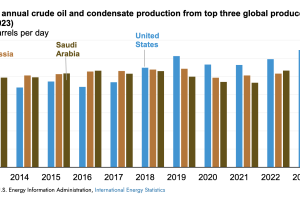Gold’s $3,000 Moonshot…

Gold bar
Gold bar
Why Goldman’s Betting Big…
The Prediction
Goldman Sachs sees gold hitting $3,000 per troy ounce by end of 2025, a 10% jump from current levels. And here’s why:

By the Numbers
Central Bank Impact
| Period | Change in Demand |
|---|---|
| Pre-Russia Sanctions | Baseline |
| Post-Sanctions | 5x increase |
| 2024 YTD | +26% price gain |
What’s Driving This?
Three Big Shifts
- Russia’s frozen assets
- Record inflation post-COVID
- Political uncertainty
The Dollar Problem
Traditional Safe Haven Status
- Past: US bonds = ultimate safety
- Now: Central banks diversifying
- Why: Asset freeze risk
Market Performance
2024 Returns
| Asset | Performance |
|---|---|
| Gold ETF (GLD) | +26% |
| Newmont Corp | -40% from peak |
| Physical Gold | Tracking ETF |
Risk Factors
Key Concerns
- Federal Reserve independence
- Growing US deficits
- Inflation risks
- Political uncertainty
Bottom Line
Central banks are going for gold over dollars – a shift that could reshape global finance. Think of it as countries buying insurance against geopolitical chaos.
Quick Take: When the world’s biggest banks start hoarding gold, Goldman thinks you might want to pay attention.
🧠 Box:
* → Greedflation: presents an intriguing departure from conventional economic explanations of inflation.This concept suggests that profit-oriented businesses hold a substantial influence over the inflationary pressures experienced within economies. This novel perspective gains traction in the backdrop of current economic trends, particularly in regions like Europe and the United States.
However, the “greedflation” concept prompts us to question whether assigning inflation solely to corporate avarice paints an accurate picture or oversimplifies a complex economic reality.
* → Greedflation: presents an intriguing departure from conventional economic explanations of inflation.This concept suggests that profit-oriented businesses hold a substantial influence over the inflationary pressures experienced within economies. This novel perspective gains traction in the backdrop of current economic trends, particularly in regions like Europe and the United States.
However, the “greedflation” concept prompts us to question whether assigning inflation solely to corporate avarice paints an accurate picture or oversimplifies a complex economic reality.
TRENDING ORIGINALS
Never Miss What’s Happening In Business and Tech
Trusted By 450k+ Readers







